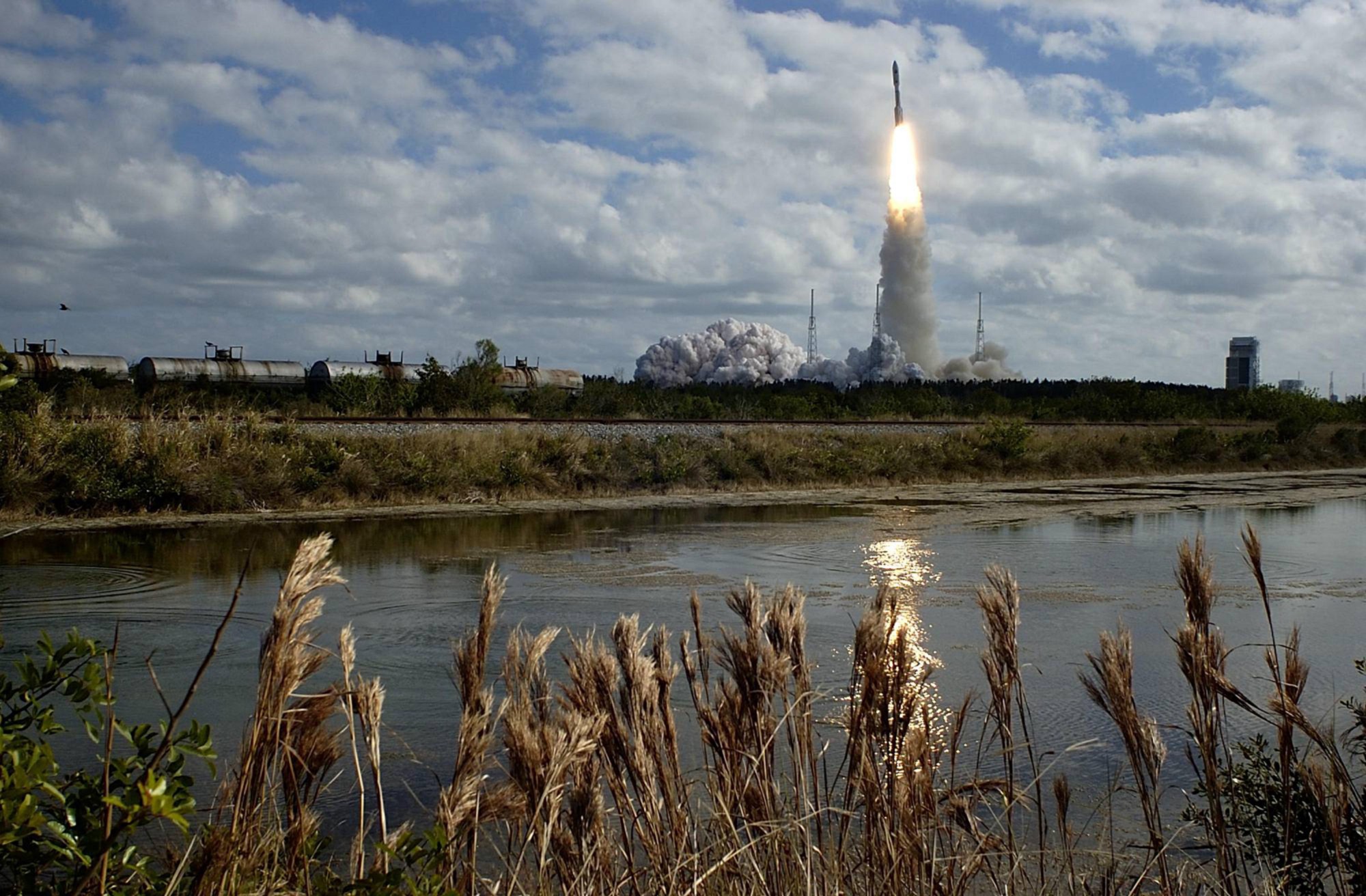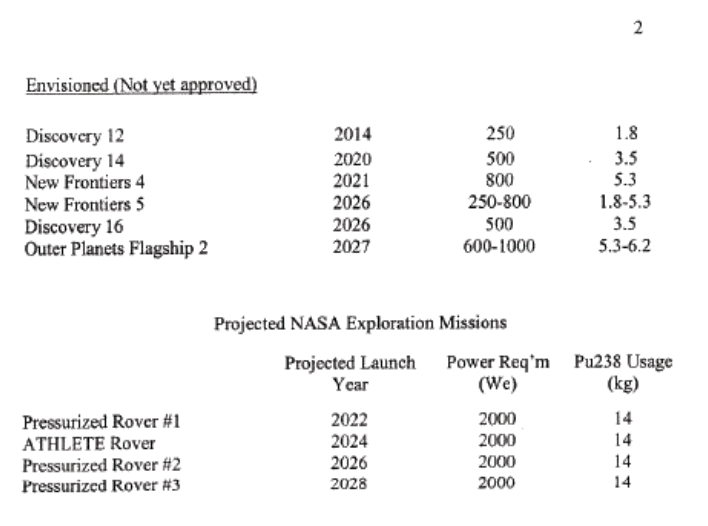When we return to deep space exploration

New Horizons launch vehicle launch, Cape Canaveral, 2006.
In December, the Washington Post published an article about a breakthrough for the space industry: the United States received 50 grams of plutonium-238, a non-nuclear isotope, and potential fuel for deep-space vehicles. On this flew the Cassini spacecraft and the Voyagers line. The latest device on plutonium was the NASA interplanetary station New Horizons: in the fall of 2015, she made a bunch of pictures of the surface of Pluto , the Internet went crazy about them.
The principle of operation of such devices is simple: engineers put on board a generator (RTG), inside - plutonium dioxide, a radioactive isotope with a half-life of 88 years, such a "perpetual battery". It saves the device from the need to constantly be in the light, as if it was powered by solar panels, and does not die, just flying away from the Sun. And the panels are short-lived: they are fragile and quickly degrade (what is 20 years for endless space, gentlemen?).
')
Over 60 years of RTG improvements, engineers have sifted through a bunch of isotopes, increased levels of protection and came to a fabulous technology: if you send research vehicles to space with the ends, there is no need to even think about plutonium burial. Other engineers began developing power-efficient generators. There are bright prospects for space exploration.
And plutonium is over: in 1985, the world got the idea to limit the nuclear potential of the States and the USSR, the only producers of plutonium. The United States tied up the production facilities of non-weapon plutonium in an armory, so we had to fold the entire tent. And the stocks of the Cold War era were resolved faster than our governments managed to recover: in 1988, the States shut down plutonium production when the Energy Department was dissolved. In 1992, the US Department of Energy began purchasing plutonium in Russia — a contract that allowed NASA to send the Curiosity science lab to Mars. At the hands of the US Department of Energy, 35 kilograms of old plutonium are left: its power output from the eighties dropped to 80 percent, and continues to fall.
In 2001, NASA sponsored the US State Council on Research to convene a committee to review the production status of plutonium-238. Well, and then everyone understood:
- that plutonium-238 is not in nature
- that he is not a gun
- that the Energy Department dismissed in vain
- that the states are not able to create an RTG for subsequent missions.
In 2013, after 12 years, the science lab in Tennessee gave the go-ahead to launch the reactors, financed and added the capacity of two more labs in Los Alamos and Idaho to speed up the process. The Ministry of Energy set a target of 1.5–2 kg of plutonium per year. Optimism of the highest category. For 3 years they produced 50 grams, which is 50 grams more than Russia for the same period.
What does Russia do
Either nothing, or silent and quietly and slowly. Hearing slips in the press, but a close observer has nothing to catch his eye on.
A year ago, I defended my diploma on projects that would return an RTG to space. And I would have continued the topic in my dissertation, I would have written at an enterprise with shipbuilding experts and veterans of the atomprom. Similar could be done in Russia in the Red Star NPO: they used to make nuclear power plants for use in space - “BUK”, “TOPAZ”, that's all . I asked for it, but they refused me: they didn’t want to put up a secrecy for a dissertation and collect a special commission - many problems for the sake of one student. Negligence in its purest form.
When we get enough fuel to fly
After 10 years at least, if we work hard together. Today, NASA can mix the new plutonium with the old in a 1: 2 ratio. The Oakridge Laboratory in Tennessee promises to make 1.5 kilograms of plutonium by the beginning of the next decade. Conventionally, in 2025 we will have 5 kilograms of usable fuel - the old plutonium will become even more worthless, and the proportions will be replaced. This will be enough for one mission, even considering new types of generators, with an increased efficiency of 4 times.
25 kilograms of the old fuel will go on an international mission to the satellites of Jupiter in 2020. Roskosmos will also take part: RIA wrote in 2013 that they will have 2 RTGs, but there is no one to confirm.

The reason for my sadness, a letter of request to the US Department of Energy from the administration of NASA on April 29, 2008
I look at the 2008 launch schedule and am sad: in addition to the 8 canceled projects, NASA will have to postpone the same amount. The study of deep space - and 99% of the solar system - will continue no earlier than the mid-twenties. In the meantime, we will live in Wonderland: to stay in place, we have to run forward very, very quickly.
Source: https://habr.com/ru/post/389983/
All Articles